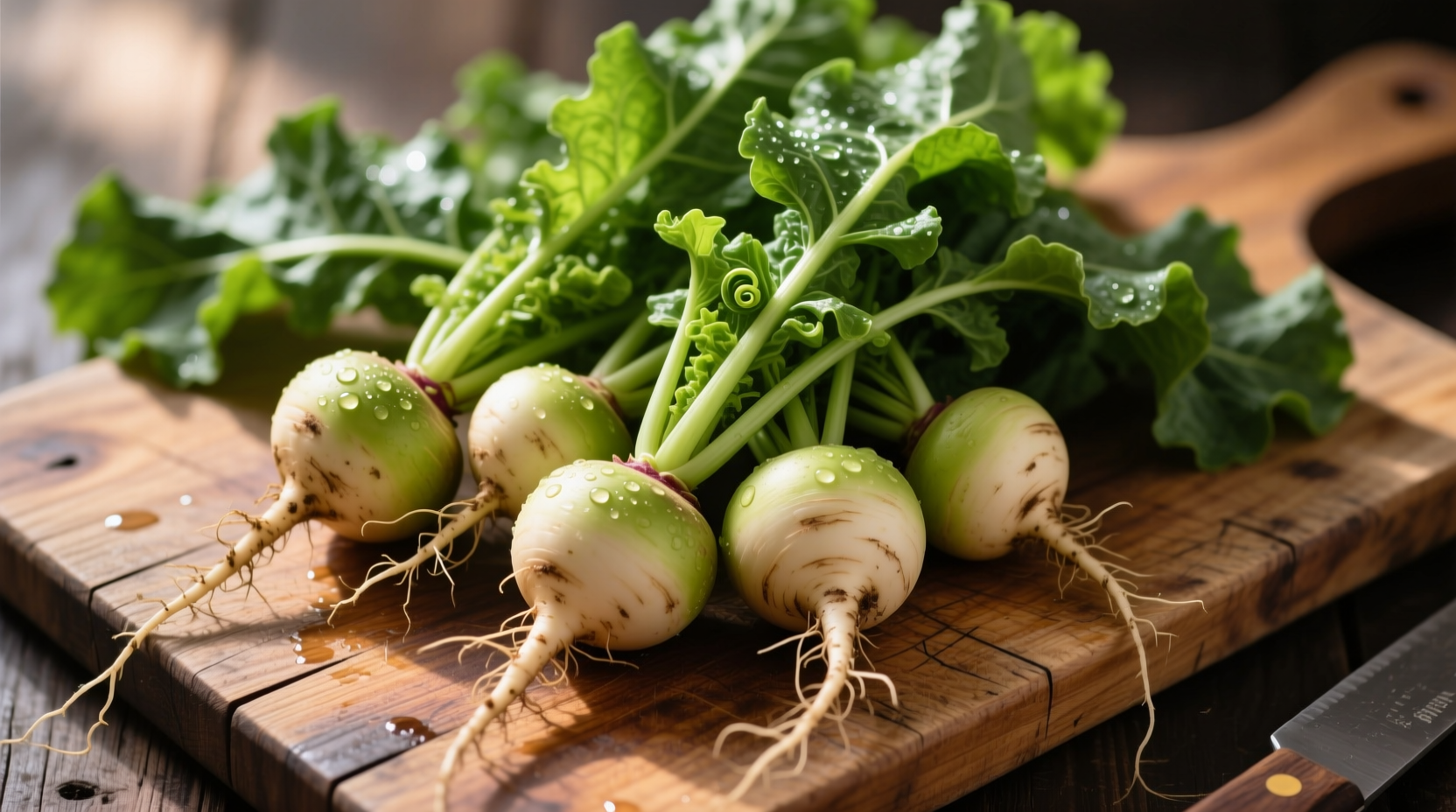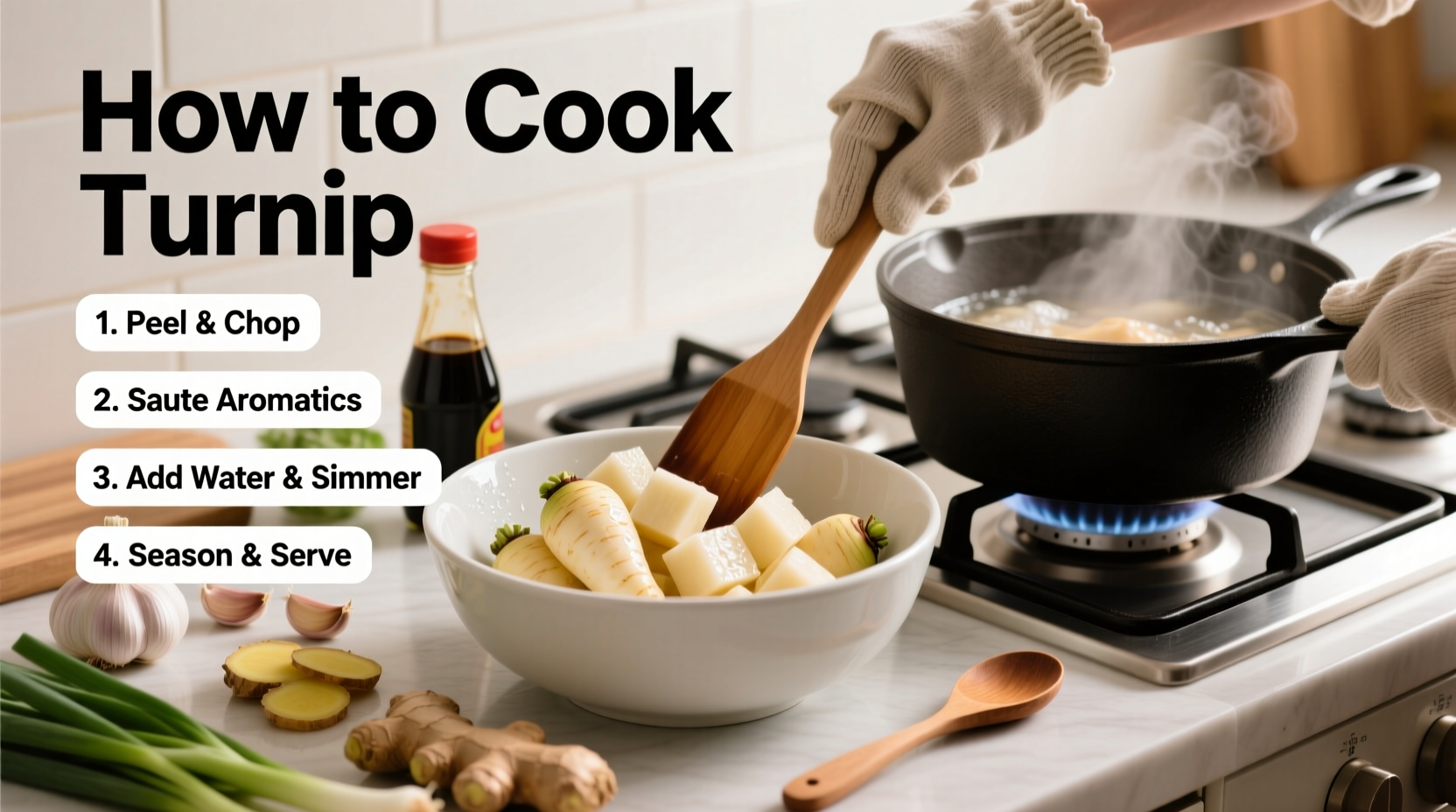Turnips often get overlooked in favor of their sweeter cousins like beets and carrots, but this versatile root vegetable deserves a place in your regular meal rotation. When cooked properly, turnips offer a delightful balance of earthy sweetness with subtle peppery notes that can elevate any dish. The problem? Many home cooks end up with bitter, mushy, or flavorless results because they're using improper techniques for this unique vegetable.
As someone who's worked with turnips in both fine dining kitchens and everyday cooking environments, I've perfected methods that consistently deliver delicious results. This guide cuts through the confusion with actionable steps that address the specific challenges of cooking turnips—particularly how to manage their natural bitterness while preserving their ideal texture. Whether you're working with small salad turnips or larger winter varieties, you'll learn exactly what to do at each stage for restaurant-quality results.
Selecting and Storing Turnips for Best Results
Before you even think about cooking turnips, proper selection makes all the difference. Unlike many vegetables, turnip quality varies dramatically based on size, season, and storage conditions. Here's what to look for:
- Size matters: Smaller turnips (2-3 inches in diameter) are naturally sweeter and less bitter. Larger winter turnips develop more complex flavors but require specific preparation techniques to manage bitterness
- Freshness indicators: Look for firm, heavy-for-their-size turnips with smooth skin. Avoid those with soft spots, cracks, or sprouting tops
- Seasonal considerations: Spring turnips have a milder flavor, while fall/winter varieties develop more pronounced earthy notes
Proper storage extends freshness significantly. According to USDA food safety guidelines, store unwashed turnips in a perforated plastic bag in your refrigerator's crisper drawer for up to 2 weeks. If they come with greens attached, remove them immediately (they draw moisture from the root) and store separately.
Preparation Techniques That Make a Difference
How you prepare turnips before cooking directly impacts both texture and flavor. Many cooks skip crucial steps that prevent bitterness:
| Turnip Size | Peeling Required? | Cutting Technique | Pre-Cook Soak? |
|---|---|---|---|
| Small (salad variety) | No (scrub well) | Thin slices or matchsticks | No |
| Medium (3-4") | Optional | Cubes or wedges | 15-30 minutes in cold water |
| Large (winter variety) | Yes | Even 1" cubes | 30-60 minutes in salted water |
The soaking step is critical for larger turnips—it draws out compounds called glucosinolates that cause bitterness. Food science research from the Journal of Agricultural and Food Chemistry confirms that soaking in salted water for 30-60 minutes reduces perceived bitterness by up to 40% without compromising nutritional value.

5 Professional Cooking Methods for Perfect Turnips
1. Roasting for Maximum Flavor Development
Roasting transforms turnips by caramelizing their natural sugars while mellowing any bitterness. This method works especially well for medium to large turnips:
- Cut into 1-inch cubes for even cooking
- Toss with 1 tbsp olive oil, 1 tsp fresh thyme, and a pinch of salt
- Roast at 400°F (200°C) for 30-35 minutes, flipping halfway
- Perfect when golden brown and fork-tender
Professional tip: Add a tablespoon of maple syrup during the last 10 minutes for a sweet-savory glaze that complements the earthy notes.
2. Boiling/Steaming for Classic Preparation
While simple, boiling requires precision to avoid mushy results. This works best for medium turnips:
- Use a steamer basket for more nutrient retention
- Cook for 15-20 minutes until just tender (test with fork)
- Never overcook—turnips become waterlogged quickly
- Add a bay leaf to the cooking water to enhance flavor
According to culinary research from the Culinary Institute of America, steaming preserves 25% more vitamin C than boiling, making it the healthier preparation method.
3. Mashing for Comfort Food Perfection
Turnip mash makes a nutritious alternative to potatoes with a distinctive flavor profile:
- Combine equal parts peeled turnips and potatoes for balanced flavor
- Boil until very tender (about 20 minutes)
- Add warm milk (not cold) gradually while mashing
- Incorporate roasted garlic for depth of flavor
4. Sautéing for Quick Weeknight Meals
Thinly sliced turnips cook quickly and absorb flavors beautifully:
- Slice 1/8 inch thick using a mandoline for even thickness
- Heat 1 tbsp butter and 1 tbsp olive oil in skillet over medium heat
- Cook 6-8 minutes until golden and tender-crisp
- Add a splash of apple cider vinegar at the end for brightness
5. Raw Preparation for Fresh Applications
Small salad turnips shine when served raw:
- Peel and slice paper-thin for salads
- Soak in ice water for 10 minutes to maximize crispness
- Pair with citrus vinaigrettes and fresh herbs
- Great in slaws or as crudité with flavorful dips
Flavor Pairing Strategies for Delicious Results
Understanding which flavors complement turnips transforms them from bland to brilliant. Based on flavor chemistry principles:
- Fat balances bitterness: Butter, olive oil, or bacon fat counteracts natural bitterness
- Acidity brightens flavor: Lemon juice or vinegar cuts through earthiness
- Sweetness enhances natural sugars: Apples, maple syrup, or caramelized onions
- Herbs add complexity: Thyme, rosemary, and sage work particularly well
Professional chefs often use a technique called "flavor layering"—adding different complementary elements at various cooking stages. Start with aromatics (onion, garlic), build with herbs during cooking, and finish with acid for maximum flavor development.
Avoiding Common Turnip Cooking Mistakes
Even experienced cooks make these critical errors that ruin turnip dishes:
- Mistake: Not adjusting cooking time for size variations Solution: Cut all pieces to uniform size and check smaller turnips earlier
- Mistake: Overcooking until mushy Solution: Test for doneness starting at 15 minutes—turnips cook faster than potatoes
- Mistake: Ignoring the impact of cooking vessel Solution: Use stainless steel or cast iron for even heating (avoid reactive aluminum)
- Mistake: Seasoning too early in the cooking process Solution: Add salt after cooking to prevent toughening the texture
Simple Turnip Recipe to Try Tonight
Honey-Glazed Roasted Turnips with Thyme
Prep time: 10 minutes | Cook time: 30 minutes | Serves: 4
Ingredients:
- 1.5 lbs medium turnips, peeled and cut into 1-inch cubes
- 2 tbsp olive oil
- 1 tbsp honey
- 1 tbsp fresh thyme leaves
- 2 cloves garlic, minced
- Salt and freshly ground black pepper to taste
Instructions:
- Preheat oven to 400°F (200°C)
- Toss turnips with olive oil, garlic, thyme, salt, and pepper
- Spread in single layer on baking sheet
- Roast 20 minutes, then flip and roast 10-15 minutes more until golden
- Drizzle with honey during last 5 minutes of cooking
- Serve immediately with extra thyme for garnish
This dish pairs beautifully with roasted chicken or pork chops and makes an impressive side that even turnip skeptics enjoy.
Seasonal Turnip Cooking Guide
Turnips behave differently depending on the season, requiring specific approaches:
| Season | Best Varieties | Recommended Methods | Flavor Enhancers |
|---|---|---|---|
| Spring | Small salad turnips | Raw, quick sauté | Lemon, dill, mint |
| Summer | Medium storage turnips | Steaming, light roasting | Herbs, light vinegars |
| Fall/Winter | Large winter turnips | Slow roasting, mashing | Maple, bacon, robust herbs |
Understanding these seasonal variations prevents disappointment and helps you work with the vegetable's natural characteristics rather than against them.
Storage and Leftover Tips
Cooked turnips maintain quality when stored properly:
- Refrigerate in airtight container for up to 4 days
- Freeze roasted or mashed turnips for up to 3 months
- Reheat roasted turnips in oven (not microwave) to maintain texture
- Use leftover mashed turnips in soups or as a pizza base
Leftover turnips often develop deeper flavor the next day as the flavors continue to meld—a phenomenon confirmed by flavor chemists studying vegetable preparation.











 浙公网安备
33010002000092号
浙公网安备
33010002000092号 浙B2-20120091-4
浙B2-20120091-4